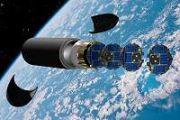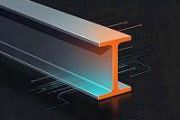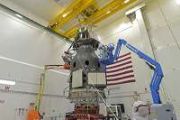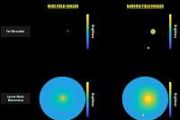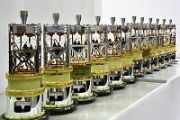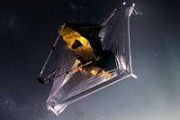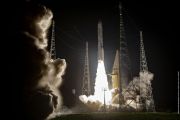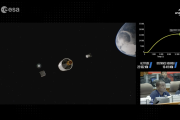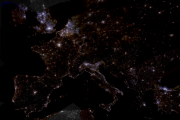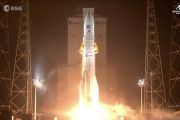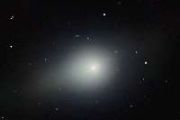
Copernical Team
SpaceX sends up Space Coast's 50th launch of the year
This request seems a bit unusual, so we need to confirm that you're human. Please press and hold the button until it turns completely green. Thank you for your cooperation!
Press and hold the button
If you believe this is an error, please contact our support team.
185.132.36.159 : eb9e3c69-b308-440b-88e9-133c308b
Amid NASA cuts, popular social accounts for Mars rovers, Voyager going dark
This request seems a bit unusual, so we need to confirm that you're human. Please press and hold the button until it turns completely green. Thank you for your cooperation!
Press and hold the button
If you believe this is an error, please contact our support team.
185.132.36.159 : 62d2d3e9-2f7c-4b8c-8bed-62bfb331
A better way to turn solar sails
This request seems a bit unusual, so we need to confirm that you're human. Please press and hold the button until it turns completely green. Thank you for your cooperation!
Press and hold the button
If you believe this is an error, please contact our support team.
185.132.36.159 : 6debf1c9-5a28-4ae4-9a9b-e7e02b13
Axiom Space back on track for possible Space Coast launch
This request seems a bit unusual, so we need to confirm that you're human. Please press and hold the button until it turns completely green. Thank you for your cooperation!
Press and hold the button
If you believe this is an error, please contact our support team.
185.132.36.159 : 54273730-a77b-4aa4-ba66-ac7d29c0
Living on Mars: Are there lessons from the conditions of prisons?
This request seems a bit unusual, so we need to confirm that you're human. Please press and hold the button until it turns completely green. Thank you for your cooperation!
Press and hold the button
If you believe this is an error, please contact our support team.
185.132.36.159 : a8d730ac-fc59-41ab-b783-db72a278
ESA-CNES press conference at Le Bourget Paris Air Show 2025
 Video:
00:24:33
Video:
00:24:33
Watch the replay of the ESA-CNES press conference held at the Paris Air Show 2025 (Le Bourget) on 16 June 2025, with Josef Aschbacher, Director General of ESA, and Lionel Suchet, Executive Vice President of CNES.
Proba-3’s first artificial solar eclipse

Today, the European Space Agency’s Proba-3 mission unveils its first images of the Sun’s outer atmosphere – the solar corona. The mission’s two satellites, able to fly as a single spacecraft thanks to a suite of onboard positioning technologies, have succeeded in creating their first ‘artificial total solar eclipse’ in orbit. The resulting coronal images demonstrate the potential of formation flying technologies, while delivering invaluable scientific data that will improve our understanding of the Sun and its enigmatic atmosphere.
Portugal expands space capabilities with ICEYE SAR satellite acquisition
 ICEYE has signed an agreement with the Portuguese Air Force to deliver a synthetic aperture radar (SAR) satellite, along with a ground segment and antenna, marking a strategic investment in national space infrastructure. The contract, announced during a ceremony in Lisbon on June 12, outlines the delivery of these assets to CTI Aerospacial, a joint venture between the Air Force and Portuguese in
ICEYE has signed an agreement with the Portuguese Air Force to deliver a synthetic aperture radar (SAR) satellite, along with a ground segment and antenna, marking a strategic investment in national space infrastructure. The contract, announced during a ceremony in Lisbon on June 12, outlines the delivery of these assets to CTI Aerospacial, a joint venture between the Air Force and Portuguese in Chile's defense policy shift carries high costs
 President Gabriel Boric's plan to replace Israel as Chile's primary arms supplier presents logistical and strategic challenges for the country's armed forces.
Chile's president has sharply criticized Israel's military actions in Gaza. In his recent state of the nation address, he supported Spain's proposal for an arms embargo on Israel "to prevent more children from being killed."
President Gabriel Boric's plan to replace Israel as Chile's primary arms supplier presents logistical and strategic challenges for the country's armed forces.
Chile's president has sharply criticized Israel's military actions in Gaza. In his recent state of the nation address, he supported Spain's proposal for an arms embargo on Israel "to prevent more children from being killed." Muon Space secures $146 million to scale satellite manufacturing and defense constellations
 Muon Space has finalized an $89.5 million Series B1 funding round, bringing its total Series B raise to $146 million. The new capital mix includes $44.5 million in equity and $45 million in credit facilities, building on the initial Series B secured in August 2024.
Leading the B1 round was Congruent Ventures, with continued support from Activate Capital, Acme Capital, Costanoa Ventures, an
Muon Space has finalized an $89.5 million Series B1 funding round, bringing its total Series B raise to $146 million. The new capital mix includes $44.5 million in equity and $45 million in credit facilities, building on the initial Series B secured in August 2024.
Leading the B1 round was Congruent Ventures, with continued support from Activate Capital, Acme Capital, Costanoa Ventures, an 

